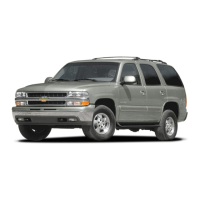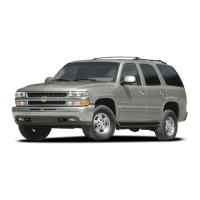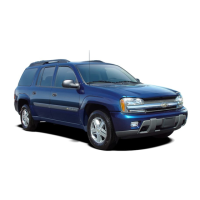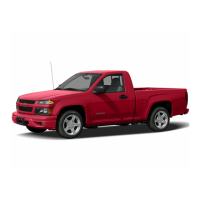
Do you have a question about the Chevrolet 2005 Tahoe and is the answer not in the manual?
| Brand | Chevrolet |
|---|---|
| Model | 2005 Tahoe |
| Category | Automobile |
| Language | English |
Details on manual and power front seat adjustments, including lumbar and heating features.
Proper usage of safety belts for everyone, including questions and answers about their function.
Information on older children, infants, and proper installation of child restraint systems.
Guidance on new vehicle break-in, ignition positions, and starting the engine.
Operation of the climate control system, including fan, temperature, and mode selection.
Control of heating, cooling, and ventilation for driver and passenger zones.
Explanation of warning lights, gages, and indicators and their meanings.
Indicates the status of the airbag system and potential malfunctions.
Shows the status of the front passenger airbag based on occupant detection.
Alerts to potential problems with the hydraulic brake system.
Indicates issues with the anti-lock braking system.
Monitors engine coolant temperature and indicates potential overheating.
Alerts to low tire pressure conditions detected by the monitor system.
Indicates potential problems with the engine, ignition, or emission control systems.
System for displaying vehicle information, warnings, and customization options.
Explains various warning messages displayed by the DIC and required actions.
Emphasizes defensive driving techniques and anticipating unexpected situations.
Core principles of defensive driving, focusing on awareness and readiness for hazards.
Critical information on alcohol's effects on driving ability and legal limits.
Details on perception time, reaction time, and factors affecting stopping distance.
How ABS works to prevent braking skids and improve steering during braking.
Techniques for steering and braking effectively during emergency situations.
How TAS limits wheel spin to improve traction on slippery roads.
How StabiliTrak® combines ABS, traction, and stability control for better vehicle control.
Understanding how skids occur and how to react to regain control.
Precautions for driving in wet conditions, including hydroplaning and brake care.
Procedures for getting unstuck and avoiding vehicle damage.
General information and safety considerations for towing a vehicle.
Procedures for towing a disabled vehicle.
Essential steps and warnings for safely towing a trailer.
Information on gasoline types, octane ratings, and specifications for optimal engine performance.
Identifying engine type and recommended gasoline for your vehicle.
Information on checking and maintaining engine oil levels for optimal engine health.
When to check and change automatic transmission fluid and filter.
Details on the DEX-COOL® coolant system, its mixture, and protection levels.
Recognizing and responding to engine overheating warnings and messages.
How the system protects the engine from damage during overheating.
Information on brake fluid, its importance, and potential issues.
Safe procedures for jump starting a vehicle with a dead battery.
General information on tires, including maintenance and safety.
Importance of correct tire inflation and how to check it.
How the TPM system works and alerts for low tire pressure.
Introduction to the maintenance schedule and its importance for vehicle longevity.
Importance of scheduled maintenance for keeping the vehicle in good working condition.
Detailed schedule for regular maintenance services based on mileage or time.
How to check and maintain the engine oil level.
How to check and maintain the engine coolant level.
A comprehensive list of recommended fluids and lubricants for your vehicle.
Step-by-step process for addressing and resolving customer concerns with dealership or GM.
Information on the complimentary roadside assistance services provided to vehicle owners.
Procedures for reporting safety defects to government agencies and General Motors.
How to report vehicle safety defects to NHTSA in the US.
How to report vehicle safety defects to Transport Canada in Canada.
How to report safety concerns directly to General Motors.












